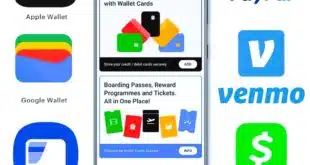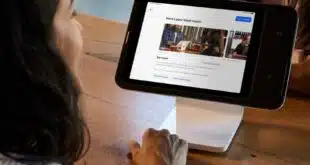A little bit of London may find its way into the hands of U.S. transit riders. Cubic Transportation Systems, a unit of Cubic Corp., will license contactless ticketing technology developed by Transport for London, the U.K. capital’s transit agency, for use with similar agencies around the world.
TfL’s technology enables transit riders to use a dedicated contactless card, dubbed Oyster, or a payment card bearing an American Express Co., MasterCard Inc., or Visa Inc. logo, as long as it has contactless capability. Riders also can use Apple Pay with their iPhones and Android Pay with Android smart phones. Oyster launched in 2003, but contactless capability for non-Oyster cards debuted in 2012. TfL says approximately 10% of all U.K. contactless transactions are made on its network, and that more than 12 million unique credit and debit cards from 90 nations have been used on its system.
The Cubic deal could be worth up to £15 million ($19.9 million) to the transit agency, which will use it as part of an effort to freeze fares. TfL said the deal is the first of a number of planned agreements to sell TfL’s expertise domestically and internationally. “The license will grant CTS access to London’s contactless system, allowing it to be specifically tailored for other work cities’ transport systems,” a TfL press release said.
Cubic, which is the system integrator for TfL and provides the card readers, sees huge potential with the licensing deal, says John Hill, senior account director for Cubic Transportation Systems Europe. “Virtually every new tender we see from transport agencies is specifying acceptance of contactless payments,” Hill tells Digital Transactions News. “New York has gone to tender and they have specified contactless acceptance as a key part of acceptance.”
Cubic made the TfL system compliant with payment-industry standards, Hill says. “We made the system EMV-compliant so that any card or mobile phone that has a payment app that also is EMV-compliant can be used on the system,” he says.
Doing so means even the occasional traveler, such as a tourist or business traveler, already has the means to use the transit system if she has a contactless card or compatible mobile phone, he says. TfL transit transactions, even those using contactless cards, typically process in half of a second, Hill says.
It was natural for Cubic to look at the TfL system and consider how it could be used elsewhere, Hill says. “We’ve seen the success from London. It made sense to get the access to use that to enhance our own product line.”
It may also enhance Cubic’s proposals to transit agencies. “It gives Cubic a leg up,” Peter Quadagno, president of Quadagno & Associates Inc., tells Digital Transactions News. His firm is a card-technology and payment-systems consulting firm based in West Chester, Pa. “TfL brings credibility to the table.” A concern, however, may be that transit-agency executives tend to be smart about transit, but not as much about payment cards, he says. “This will give transit authorities something they can trust.”





